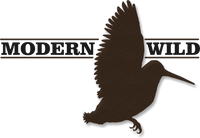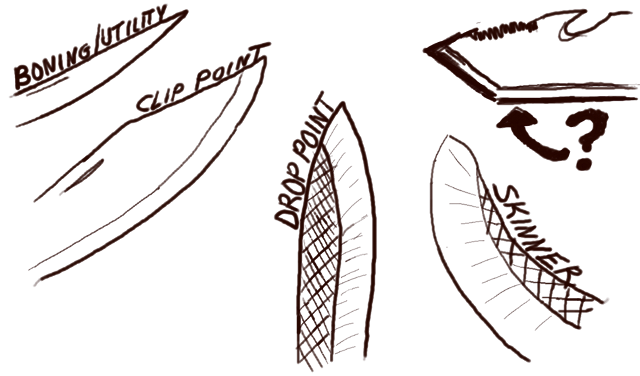
 The eager anticipation of peeling back the glossy cover of the latest outdoors catalog is still a vivid memory from my childhood, and the journey throughout the pages always left me traveling back and forth throughout the knives lining a few treasured pages. The many dreams of how each knife held within the pages would serve my exact needs materializing over time into the reality of the general utilitarianism of what a knife truly is. The excitement of a young boy wearing through pages of knives can only be paled by the sheer level of necessity these simple tools have held for outdoorsmen and outdoorswomen throughout time, and across the world. Likely for every kind of knife ever made, there has been a write-up of some kind: "choosing the right knife," "knife care," "sharpening," "cutting techniques," "how to properly dispatch a zombie with a knife"; yet so few articles tackle the one anatomical element present on every knife big or small... the edge. From shards of obsidian flaked with surgical edges, to an ornate antler handled 'bowie' knife resting painfully on some collector's shelf, REAL KNIVES are made with a single purpose - to cut. Lets walk through a few quick elements of a knife and its edge, along with some real life application (no armchair warrior fantasies here).
The eager anticipation of peeling back the glossy cover of the latest outdoors catalog is still a vivid memory from my childhood, and the journey throughout the pages always left me traveling back and forth throughout the knives lining a few treasured pages. The many dreams of how each knife held within the pages would serve my exact needs materializing over time into the reality of the general utilitarianism of what a knife truly is. The excitement of a young boy wearing through pages of knives can only be paled by the sheer level of necessity these simple tools have held for outdoorsmen and outdoorswomen throughout time, and across the world. Likely for every kind of knife ever made, there has been a write-up of some kind: "choosing the right knife," "knife care," "sharpening," "cutting techniques," "how to properly dispatch a zombie with a knife"; yet so few articles tackle the one anatomical element present on every knife big or small... the edge. From shards of obsidian flaked with surgical edges, to an ornate antler handled 'bowie' knife resting painfully on some collector's shelf, REAL KNIVES are made with a single purpose - to cut. Lets walk through a few quick elements of a knife and its edge, along with some real life application (no armchair warrior fantasies here).
It is easy to become intimidated by all the terminology used among knife "experts": drop point, skinner, caper, hidden tang, full tang, rockwell hardness, convex edge, Norwegian grind... Not surprisingly these terms are better at misleading than describing. I would wager one of my prized knives on the fact that any sharp knife, big or small, could fulfill any need in about 99% of all situations. Sure some knife styles work BETTER in SOME situations, but if your edge is sharp, you have your bases covered. You do NOT need to have a skinner to skin, a utility blade for camp work, or a guthook for field dressing game, weird huh? Look at any vintage knife and your going to see many similarities between them: the point, main cutting edge, and a curve or sweep between the two.
Also, you won't see too many outside of 2.5" to 5" on the blade length. So, has modern society uncovered advances in knife technology along with all sorts of reasons for adding every shape, size, and doodad imaginable? Nope. At least if you don't include marketing and sales. Don't get me wrong, I own knives of all shapes and sizes, but if I'm hunting big game, camping in the backcountry, chasing upland birds, or foraging for fall mushrooms, I'll likely have a simple and sharp 3-4 inch blade with a sturdy handle, no frills no fluff. If you need to cut down a tree, bring an axe, but for everything else 3" of cutting power is all you will likely need.
The tip and sweep of a blade is one of the most important elements of a knife as most of your cutting takes place here. Ironically the main edge doesn't see much work aside from cutting rope or whittle a stick. So why have a longer blade if you're only extending the part of the knife you don't really use, while making the working part of the blade harder to maneuver? Shorter blades maintain most of the positives from a longer knife while being more easily maneuvered and able to access hard to cut areas. The reason for a sweep on a knife tip is to keep the tip from being the main point of contact minimizing too aggressive cutting; this is why skinning knives have such an accentuated sweep, this helps prevent the tip from slitting the hide while skinning or from sticking the entrails while field dressing game. An aggressive 'pointy' knife tip is extremely important in many applications such as de-boning meat, dressing small game, or other activities that require more tip work. The 'drop point' style blade is a great balance of tip to sweep design; the tip is pushed forward on the main edge to allow more aggressive cutting with the tip, but there is still enough of a sweep on the blade to have more control over what is getting cut.
|
O1 Blade & Layered Birch Bark Handle - Grouse Knife. |
So what type of metal makes the best knife blade? Well, a metal that gets sharp is a great place to start, so... any metal. If it were only that simple! Metal type and heat treat is a whole can of worms, and knifemakers will hold debates all day long on what metal to use where and when. Without getting too in depth, while there are pros and cons for every alloy and steel available, the main question in my opinion is stainless vs non-stainless. Sometimes it is nice to not have to worry about rust, and stainless is a great choice in those instances. On the high carbon side, some non-stainless knives can have superior edges to stainless varieties, but there are many variables in play here and most people (including me) would never notice a difference in standard use. Bottom line, if you get a blade from a reputable knife supplier, the edge will get sharp and it will be able to be sharpened - what else do you need? Yes, there are better steels and heat treats than others, but their influence on a blade's performance is much less a factor than the knife owner. Learn how to properly sharpen a knife, how to touch up the edge when necessary, oil and clean and you will be worlds above most. If anyone ever says that their knife hardly ever needs sharpening, they likely don't use it much. The best knife steels will still get dull, and the worst knife steels can always be sharpened. My personal favorite knife metal is O1 which is a high carbon steel, and I like it because it retains a very keen edge and is quite durable. O1 will rust if neglected, but a little oil and patina will take care of that. High carbon steels will usually develop a patina over years of use that offers the tale of the knife, similarly to the story told by the scars of the person carrying it. In some ways, the style, appearance, art, and history of a knife is as important to me as the utility of it, but that's another story and this story is about the knife as a tool... I use knives, even if they're pretty.
|
O1 Blade & Micarta handle |
You can go back and forth all day on why this knife or that knife is a better choice in any given situation, but for me, I rarely know how my knife will be employed at any given situation of need. This unknown makes me fall back on the basics that many people overlook, and there are really only two main requirements in all knife use. 1. The knife has to be accessible. This always leans me towards a fixed blade in an easily accessible sheath which provides a ready to use knife in a quick motion; no folding/pocket knife, spring assist opening or not, can deliver a blade faster than a fixed blade knife. 2. You must be able to deliver the edge to the object needing cutting. If you're blade is too long or deep you may not be able to get it in a position to properly cut. I sure as heck don't want to have to field dress a handful of woodcock, pick mushrooms, or cut an onion with a 14" tonto point zombie knife; I'll take my chances with a slim 3" drop point, and if a zombie apocalypse happens I'll figure something out!





